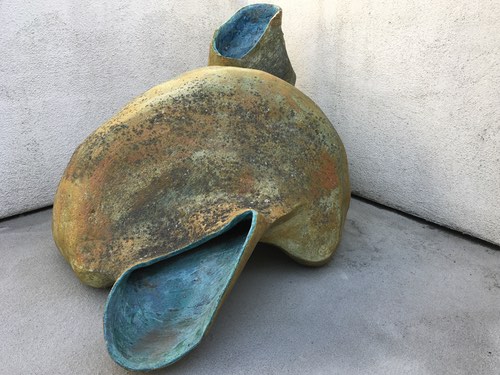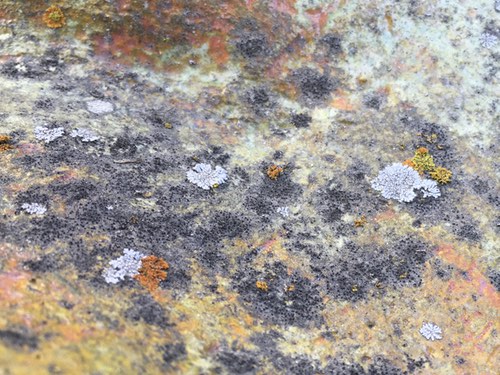When my chosen medium was clay, I used a lot of layered, often gritty glazes. In the back of my mind always thinking lichens.
Today when I was sweeping the deck, to my delight I found this piece has actual lichens growing on the surface.


The piece was made in a class at Ohio State in the early 80s. The clay is a buff colored sculpture body with some nice aggregate. The piece was bisque fired to cone 5. A cone 05 lithium blue glaze was applied for the base color. Then low-fire lead glazes were applied. The last fired to cone 015.
The piece has been on the deck since 1994. It looks so much better with the addition of lichens.

If interested in viewing lichen glaze surfaces, check out Lana Wilson’s work. Lana’s text, Ceramics: Shape and Surface has some great information for the beginner; and it also has loads of information on how to achieve gorgeous glaze surfaces. The text is available on Lana’s website.
A note about my use of lead glazes. Yes, they are gorgeous low-fire glazes. But lead is potentially dangerous. I haven’t been used lead glazes for several years. Since I have been attempting to use safer materials and processes, I reluctantly decided to remove all potentially toxic ceramic materials from my studio. I had quite the stash. I was fortunate that during the yearly clean-up, the materials were accepted for disposable without cost.
Did I really remove all of the lead from my studio? Well, I did keep a small bag of a leaded frit, just in case. I also found a small sheet of lead that I kept. It is a lovely soft material. I used it to line and wrap portions of boxes.

Detail of a piece in my Make Your Own Luck series.
The vertical section is wrapped in sheet lead.
The nest-like material is lead wool.
The three objects are whole nutmeg.
Nutmeg was used for luck.
If consumed it could be deadly.
